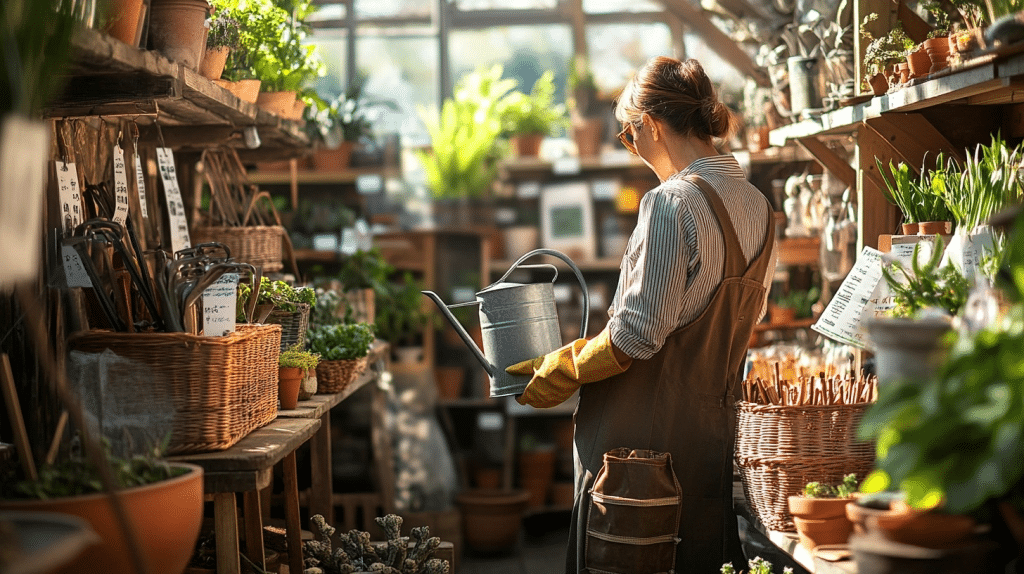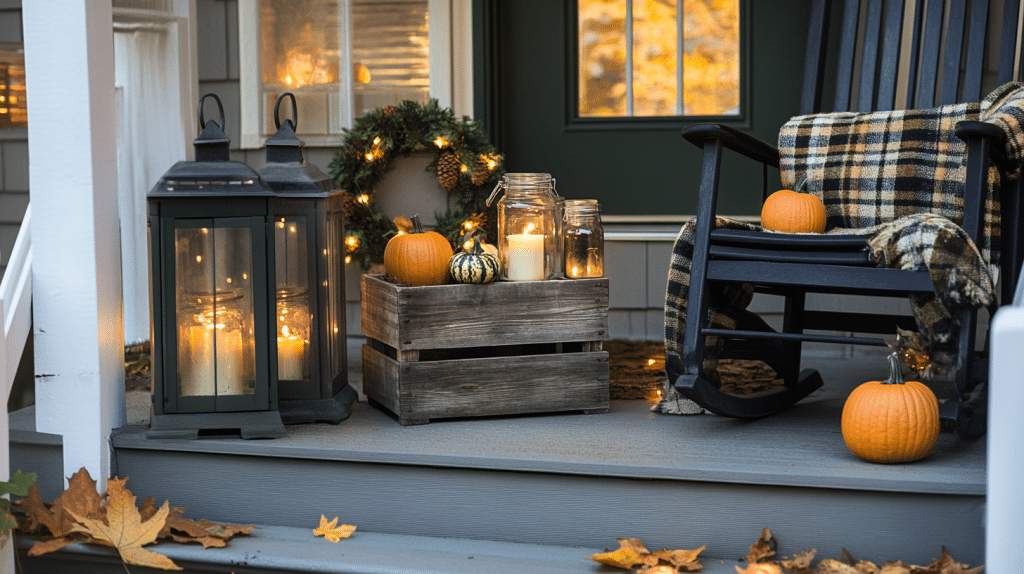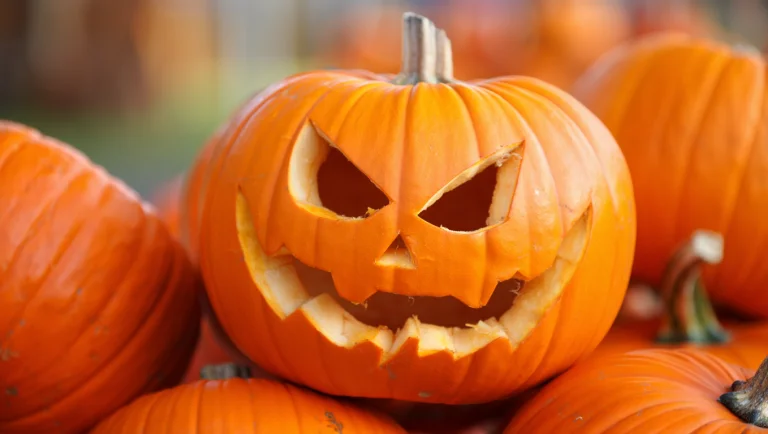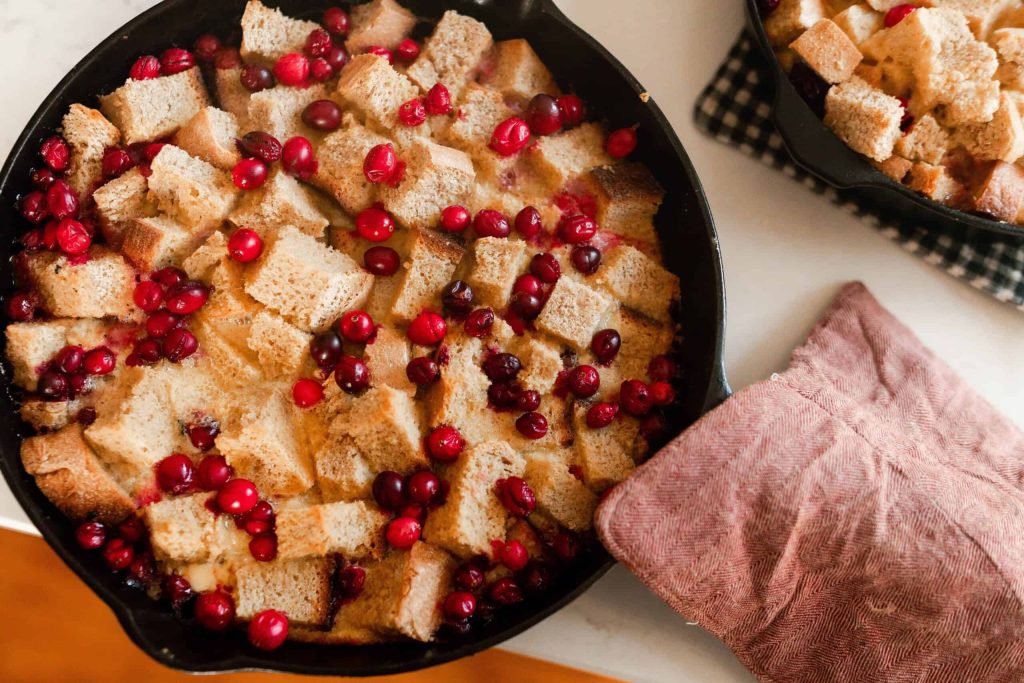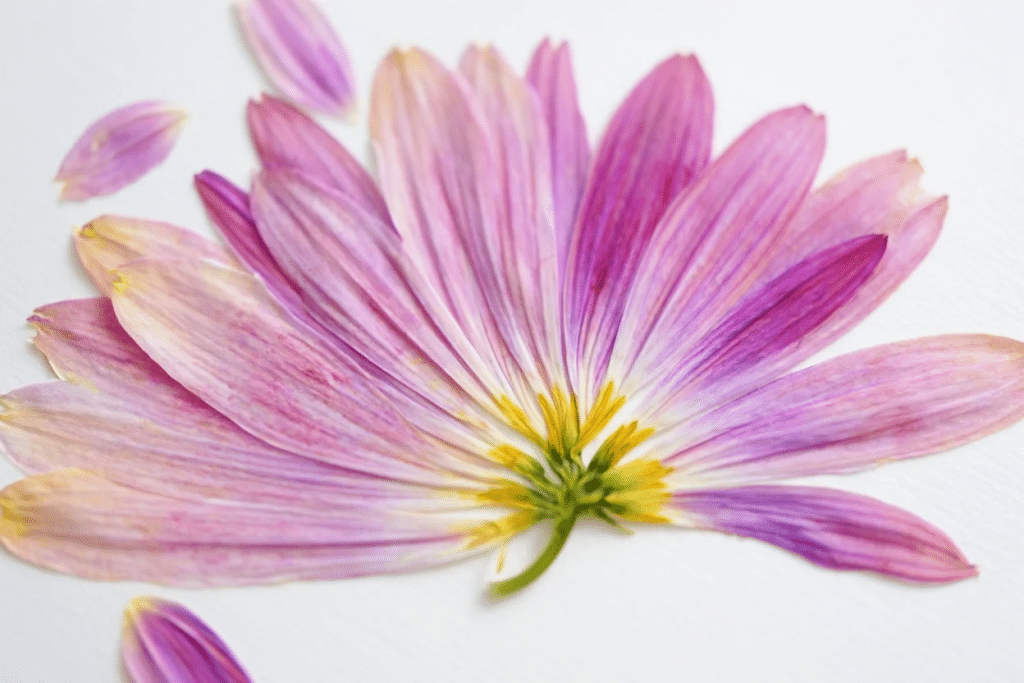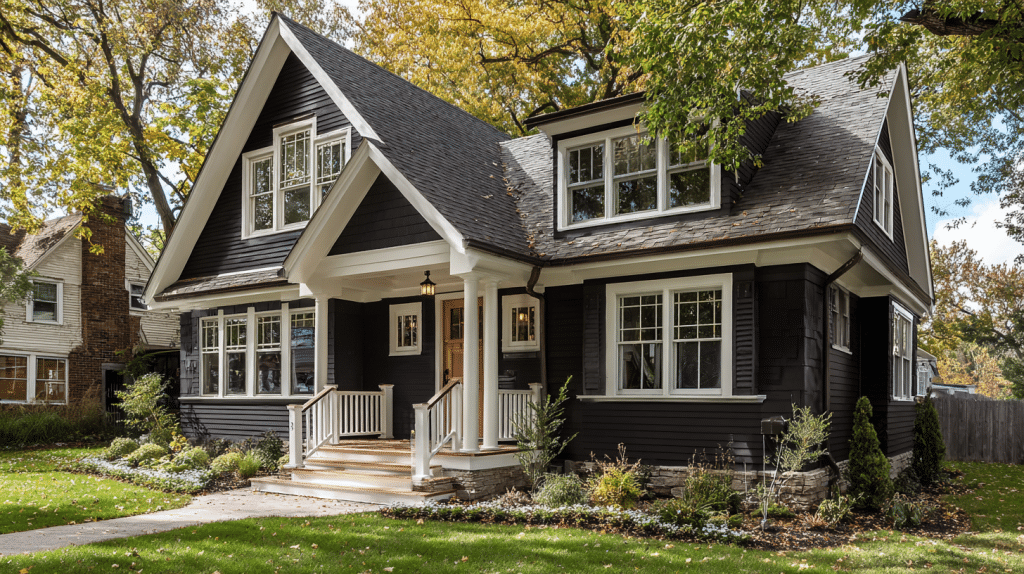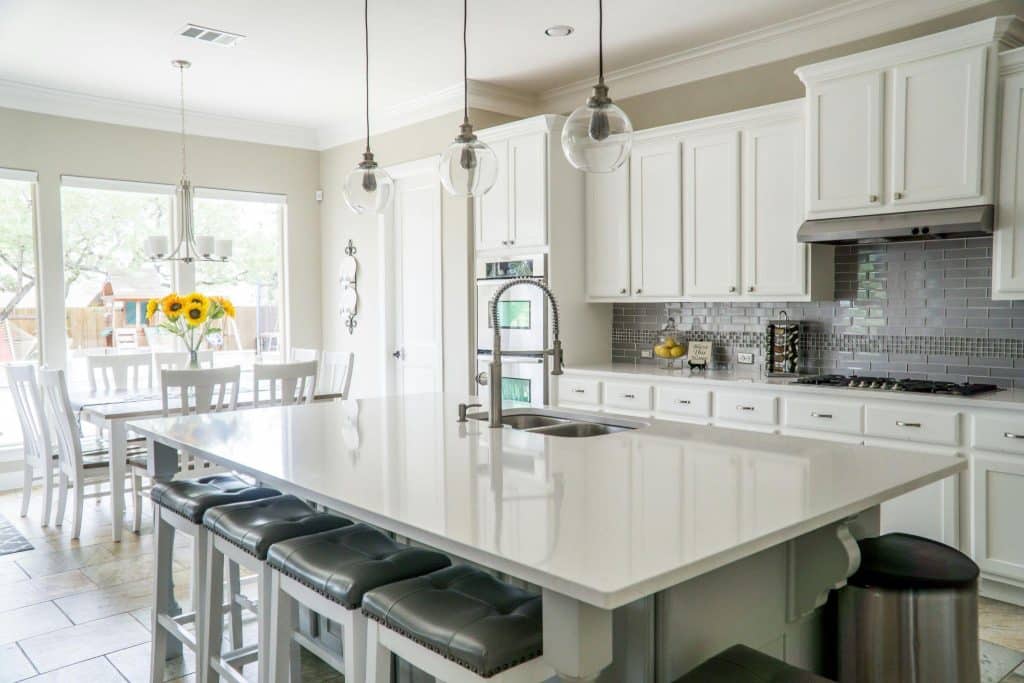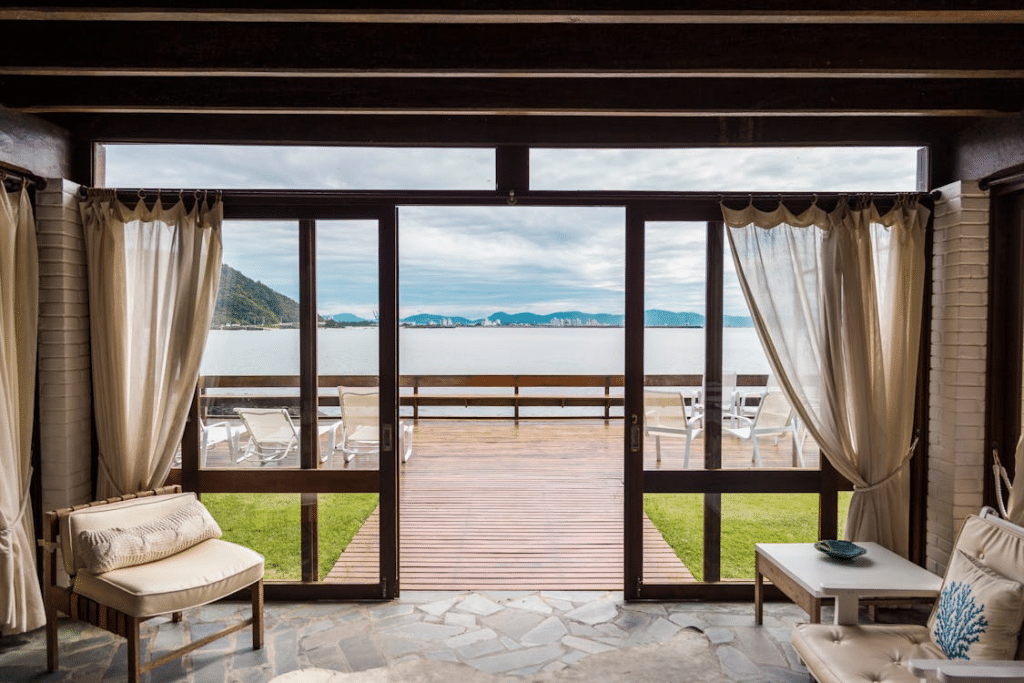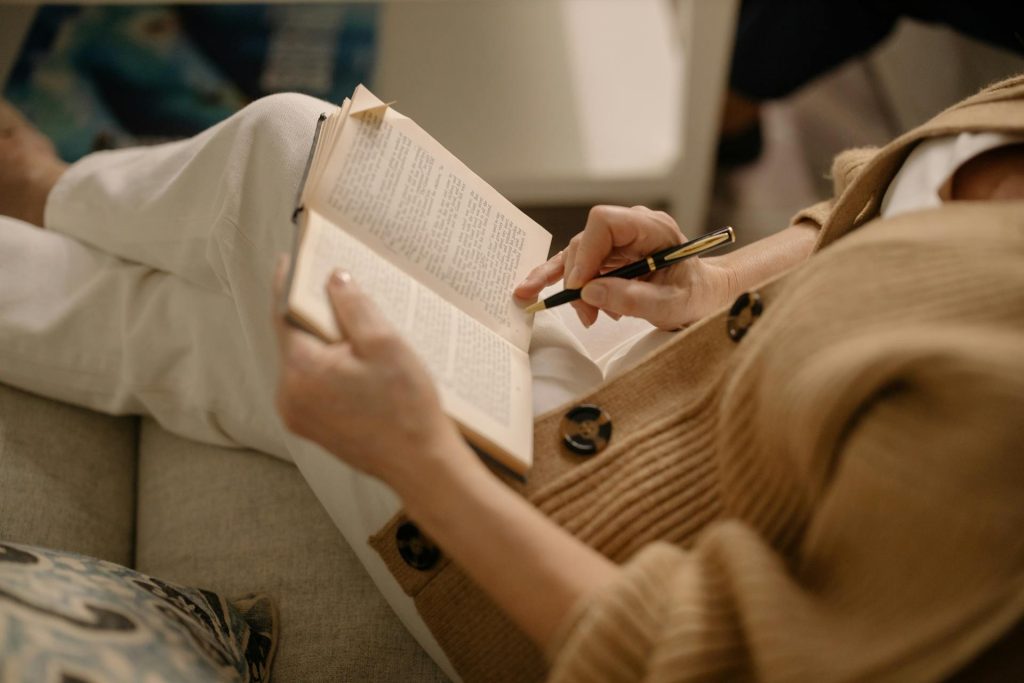Finding good deals at garden thrift stores can be tough. Many shoppers walk in without a plan and leave with items they don’t need or that break within weeks. But what if you knew exactly how to spot quality items amid the clutter?
Garden thrift stores hide gems among the common items – from well-made tools to rare plants that sell for five times the price at retail stores.
The trick lies in knowing what to look for and when to visit. A few simple tips can help you find useful, long-lasting garden items at a fraction of their normal cost. Ready to become a smart garden thrift store shopper?
Let’s look at how you can make your next trip both fun and fruitful.
Thrift Store Finds You Shouldn’t Miss
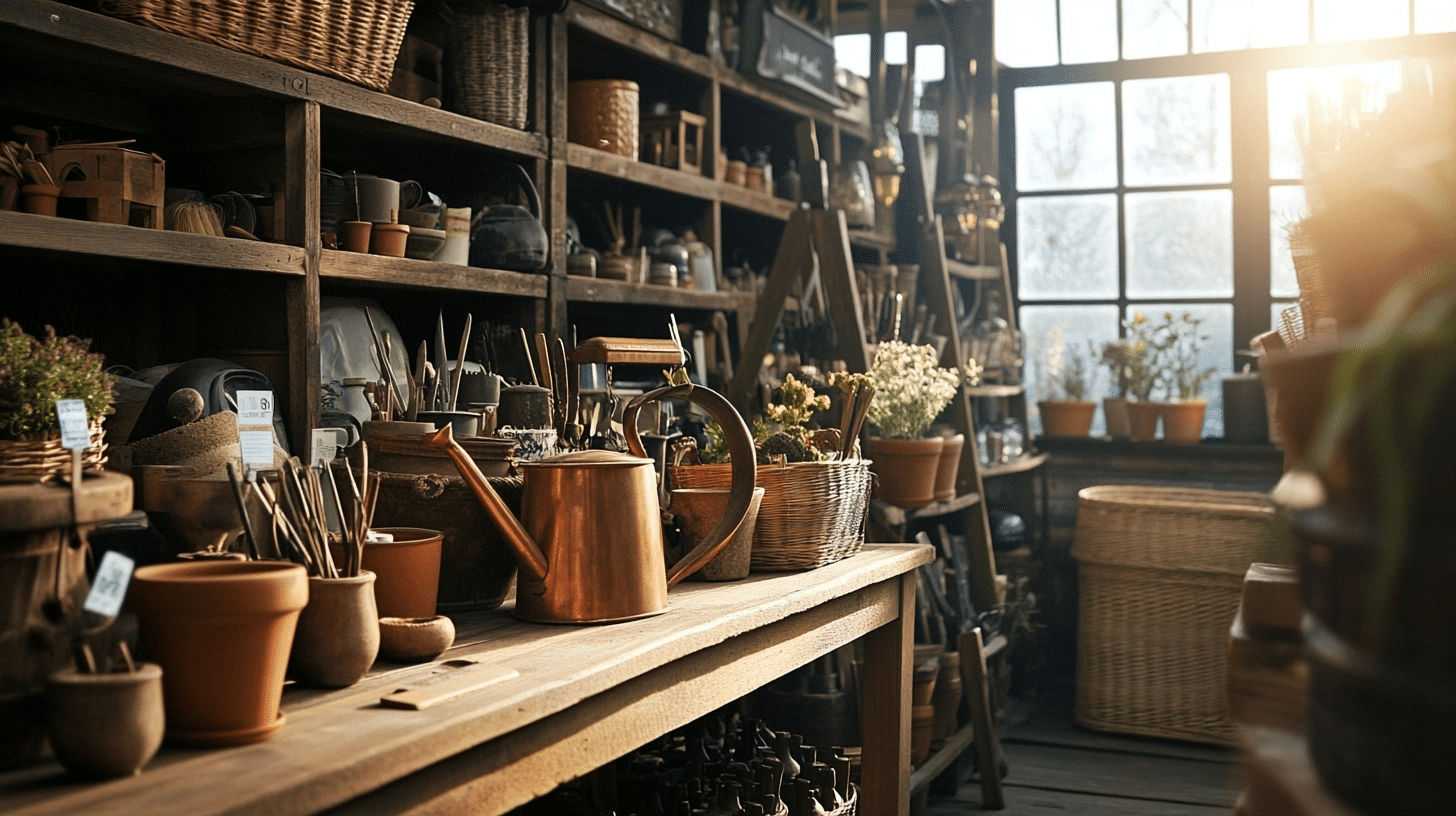
Garden thrift stores hold hidden gems that many shoppers walk right past. While some items catch your eye immediately, others require a trained eye to spot their value.
These special finds can convert your garden from basic to personal without incurring significant expenses.
Vintage Watering Cans
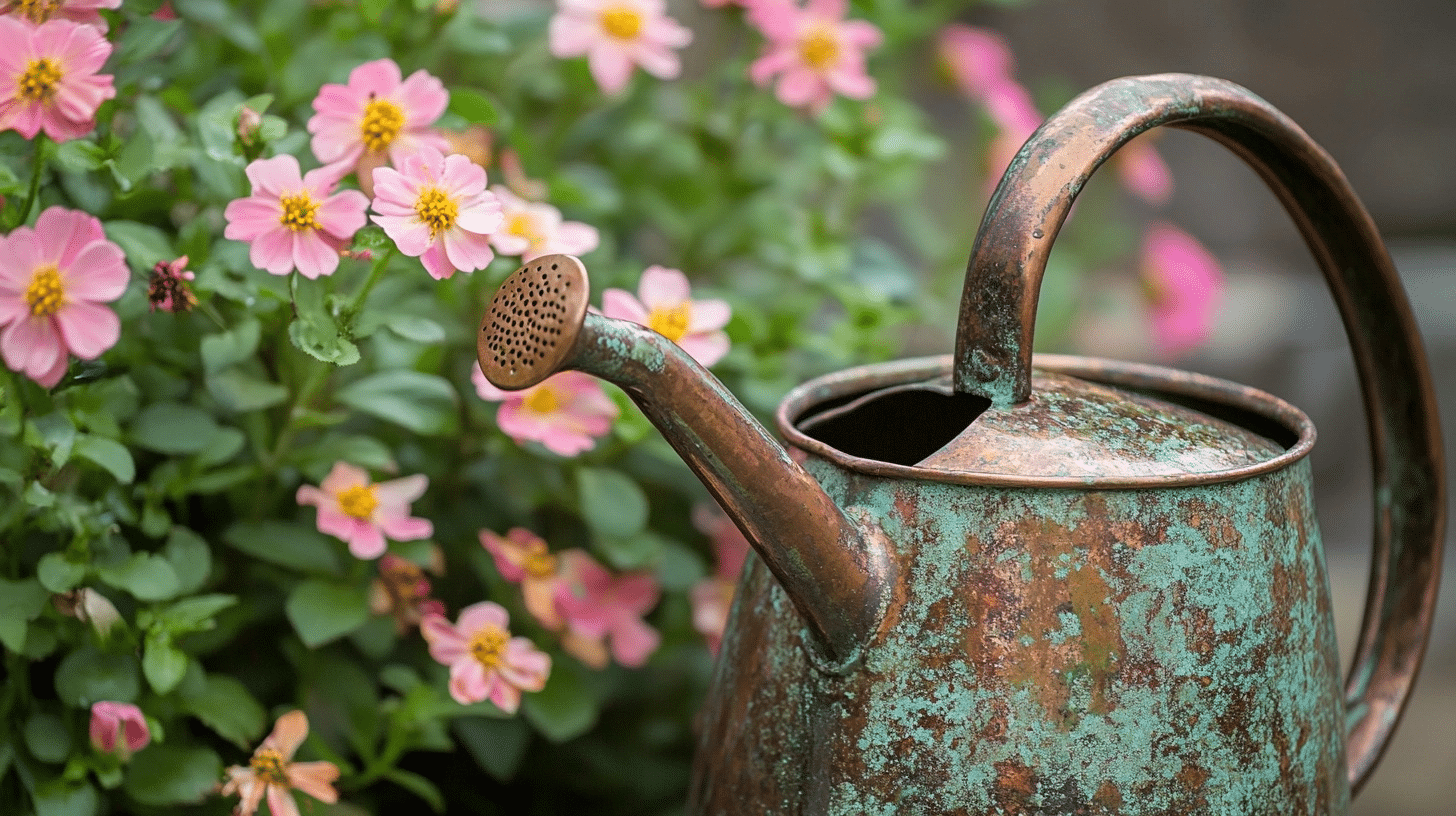
Metal watering cans from past decades offer both charm and function in your garden space. Look for cans with minimal rust and intact spouts that still pour well. You can clean them with a mild vinegar solution to remove grime while keeping their aged look.
These make great plant holders when they no longer hold water well, or use them as intended for gentle watering of delicate plants.
Metal Pails and Buckets
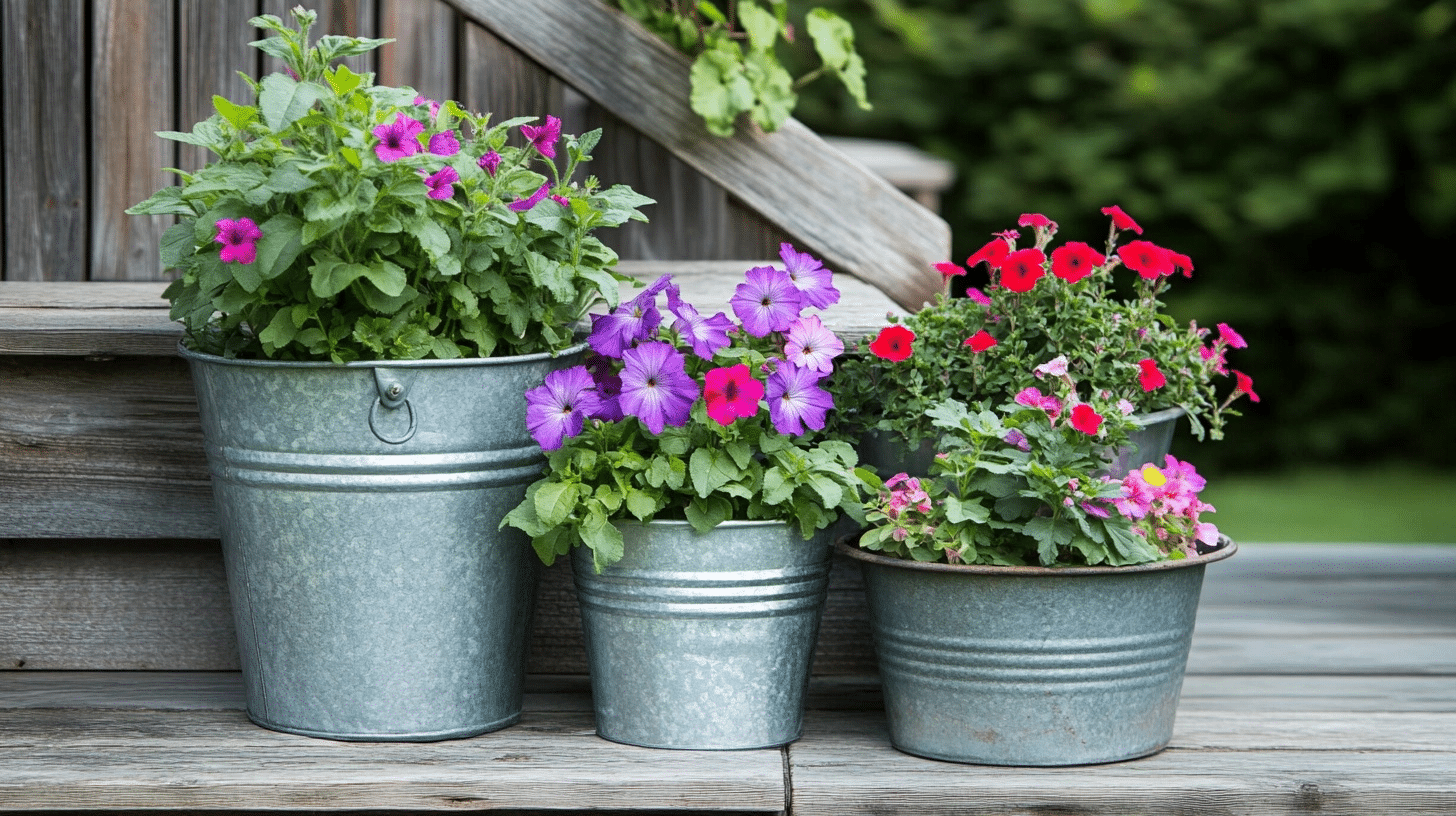
Old farm buckets and pails can serve multiple gardening needs at a fraction of the cost of new ones. Check for solid handles and bottoms without holes that will leak. Small pails are ideal for indoor herb gardens, while larger ones can accommodate outdoor plants or serve as storage for tools.
Many gardeners utilize these to create portable gardens that can be relocated as the seasons change, providing flexibility in their outdoor design.
Wicker Baskets
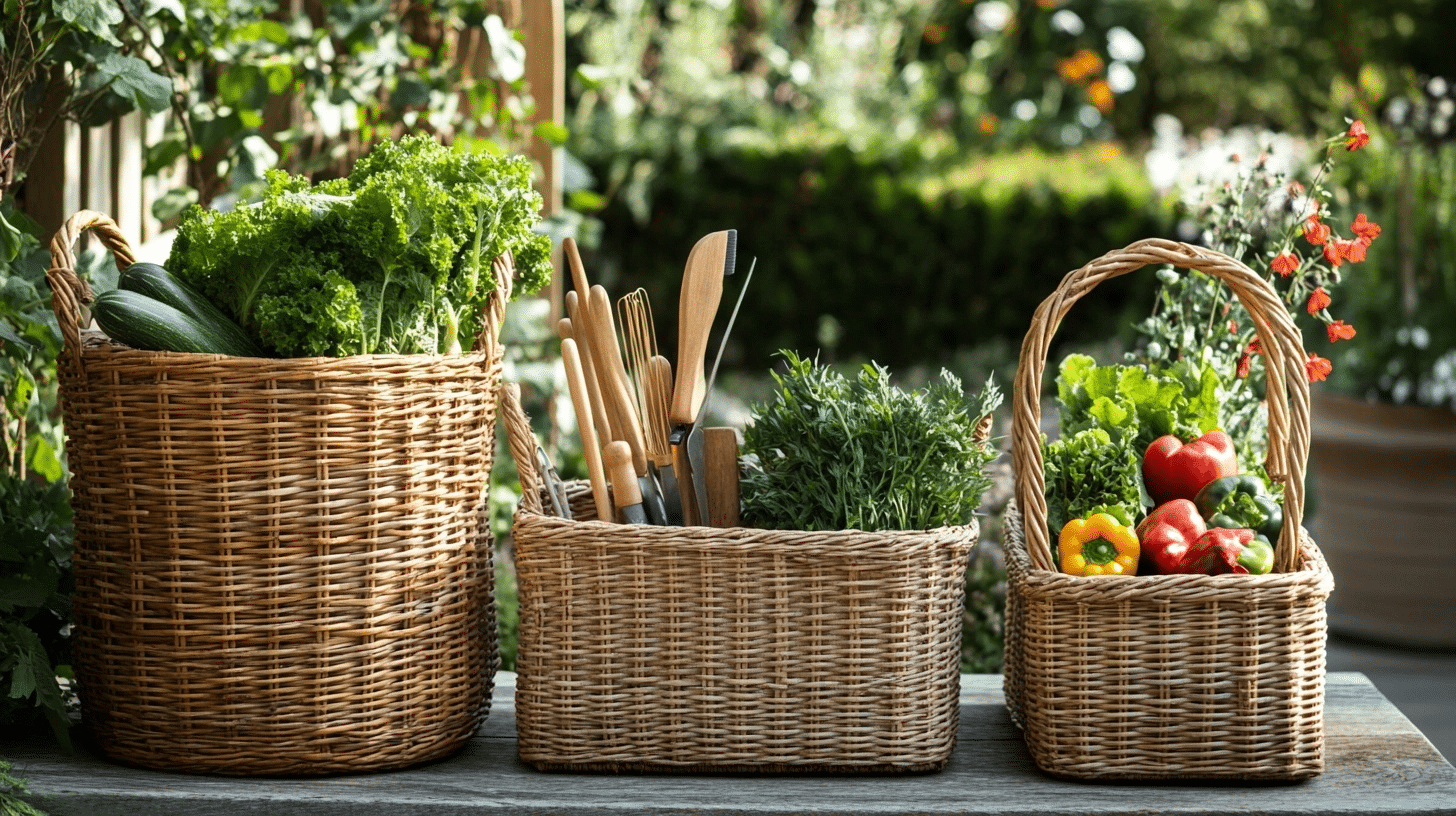
Thrift store baskets offer natural texture and warmth to garden areas when used creatively.
Line them with plastic or coconut coir before filling with soil to extend their life as planters. The open weave allows for good air flow, which many plants love.
Shallow baskets work perfectly for gathering fresh herbs, while deeper ones can hold tomatoes or other harvested vegetables.
Planters and Pots
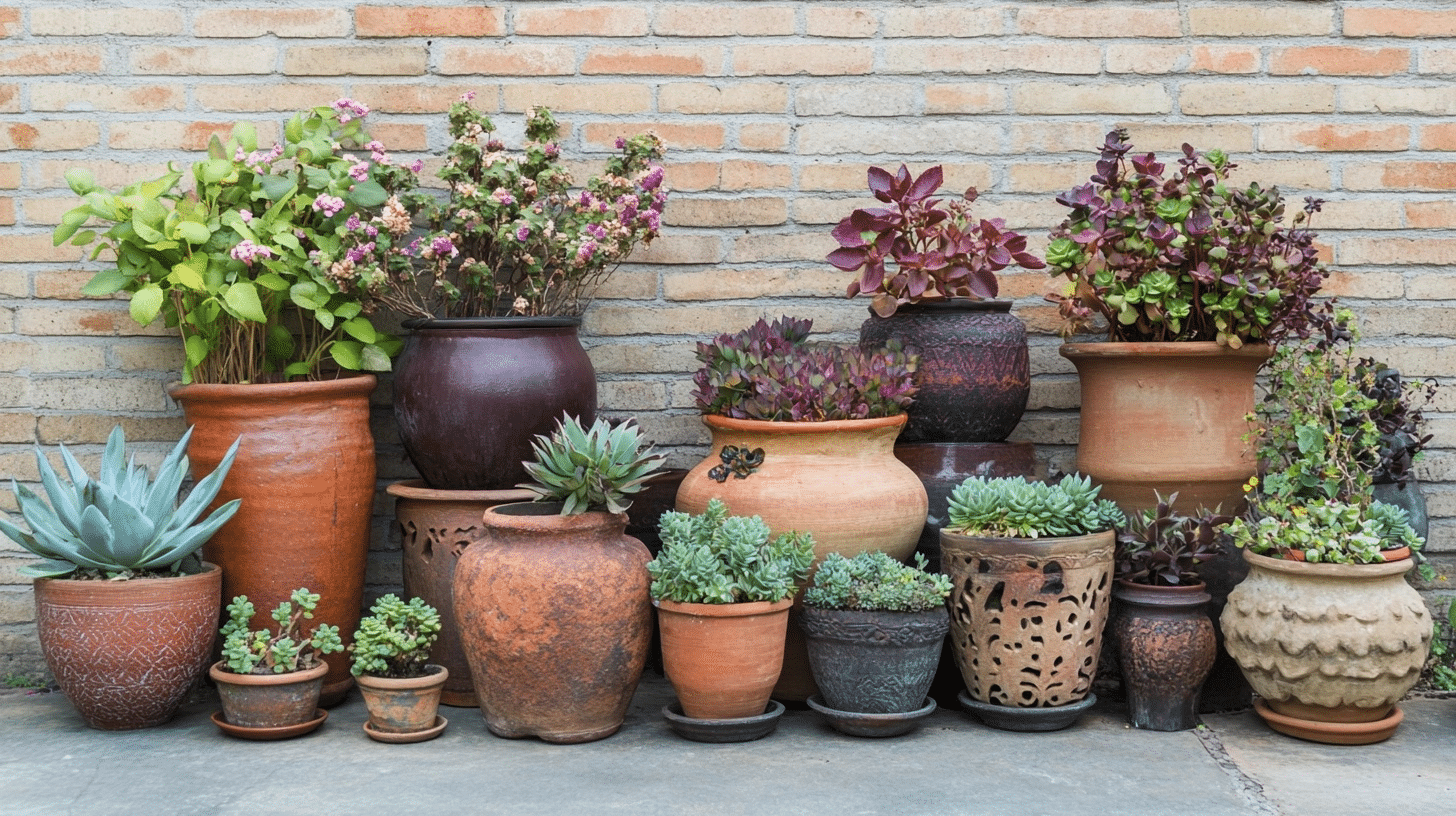
One of the best thrift finds, garden pots often sell for a small portion of their retail price. Mix different sizes, shapes, and materials for a collected-over-time feel in your garden.
Clean them thoroughly with a bleach solution (1 part bleach to 9 parts water) before use to kill any plant diseases.
Look beyond obvious chips or cracks for pots that still have plenty of life left.
Tables and Benches
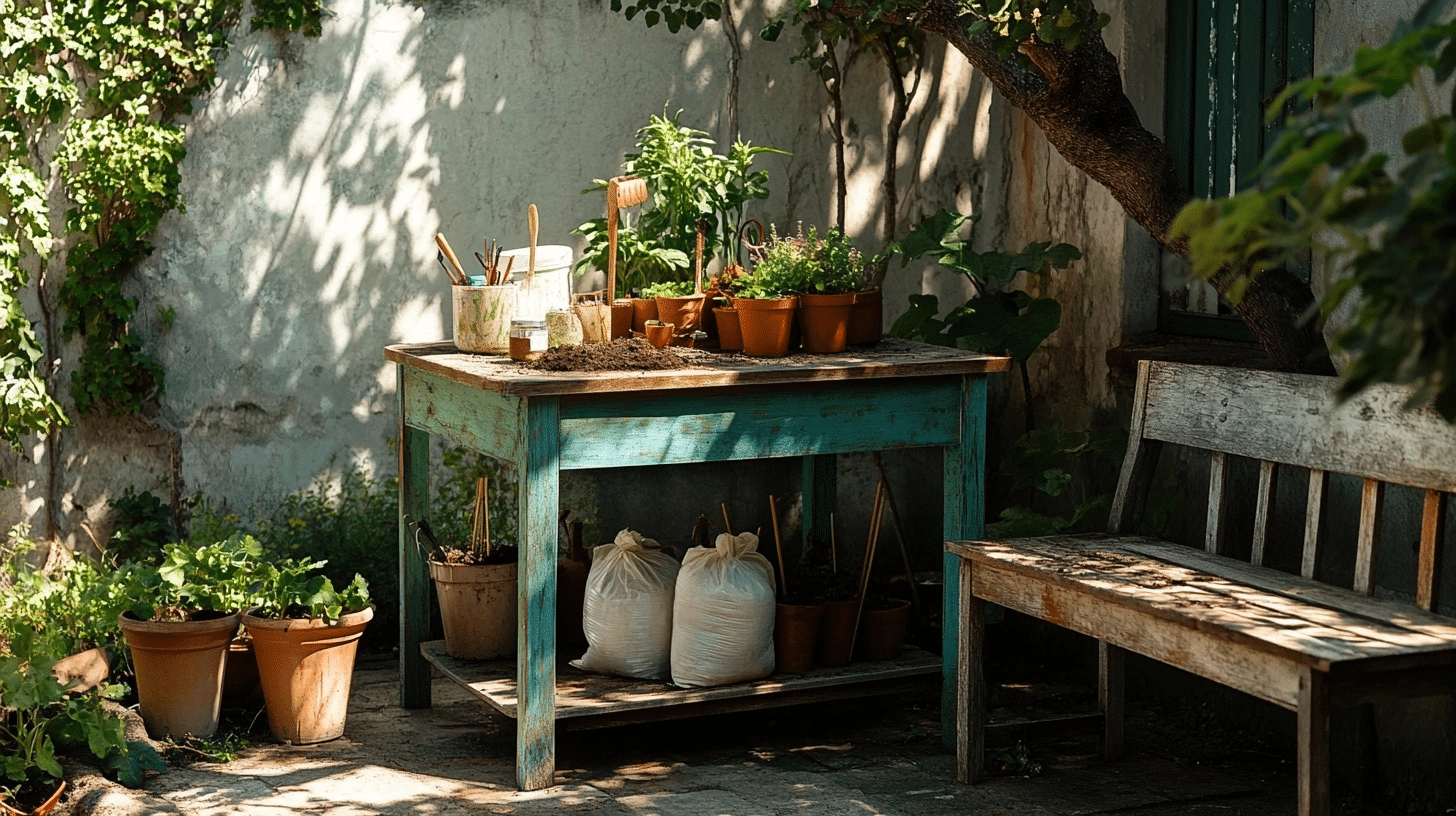
Small side tables or benches can be perfect plant stands or work surfaces in your garden. Water-resistant woods like cedar or teak last longest, but you can seal other types with outdoor paint or varnish.
Look for solid construction and good bones, as minor cosmetic issues are easily fixable.
A thrifted table near your garden gives you a spot to work with plants or enjoy a morning coffee surrounded by greenery.
Decorative Lanterns
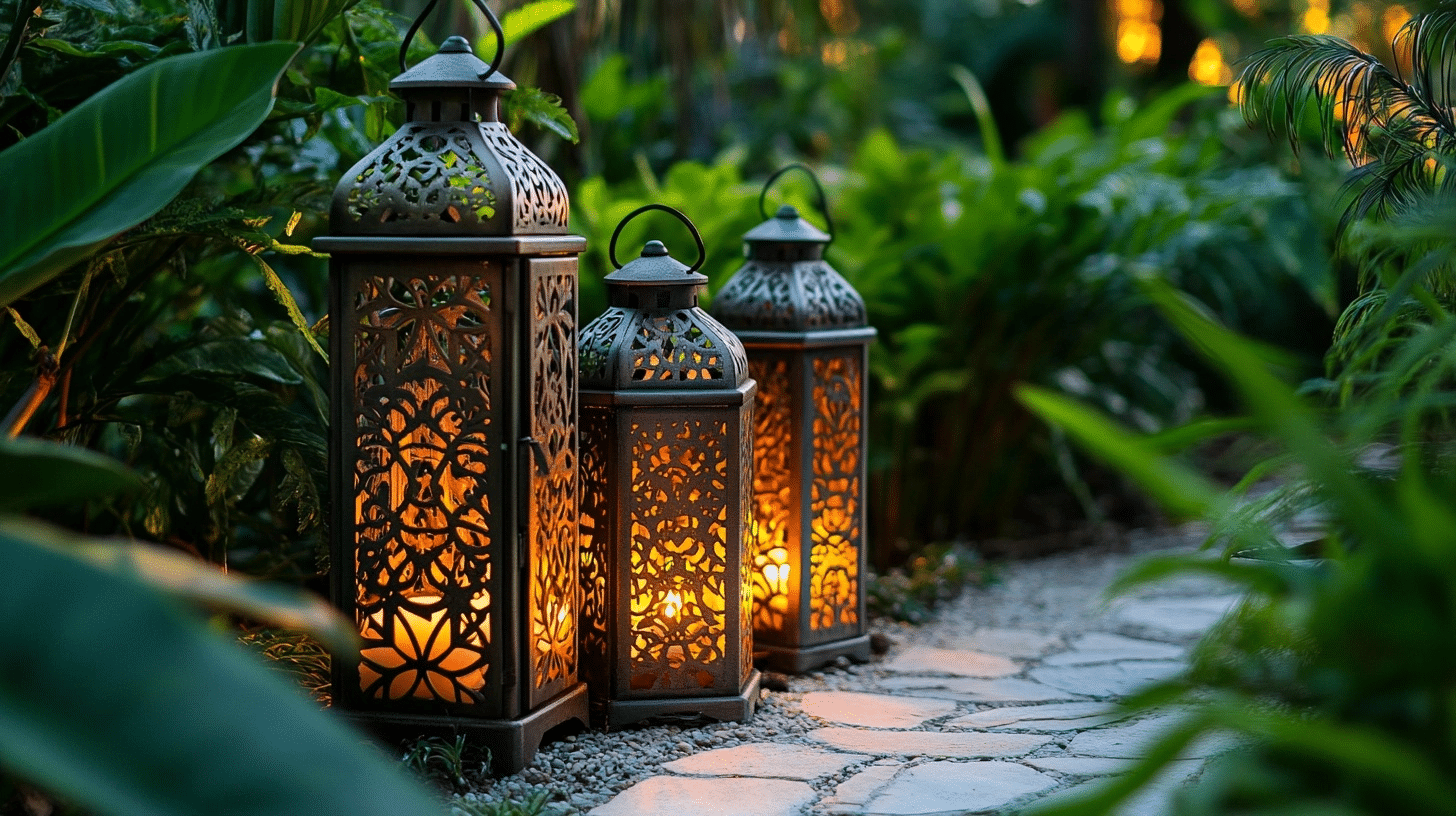
Garden lanterns from thrift stores add a warm glow to outdoor spaces at night. Look for ones with glass panels intact and a stable base that won’t tip over.
You can replace damaged glass with plastic sheets cut to size or leave them open for a different look.
Fill them with battery-operated candles or string lights for safe illumination, or place small potted plants inside for a mini terrarium effect.
Shutters
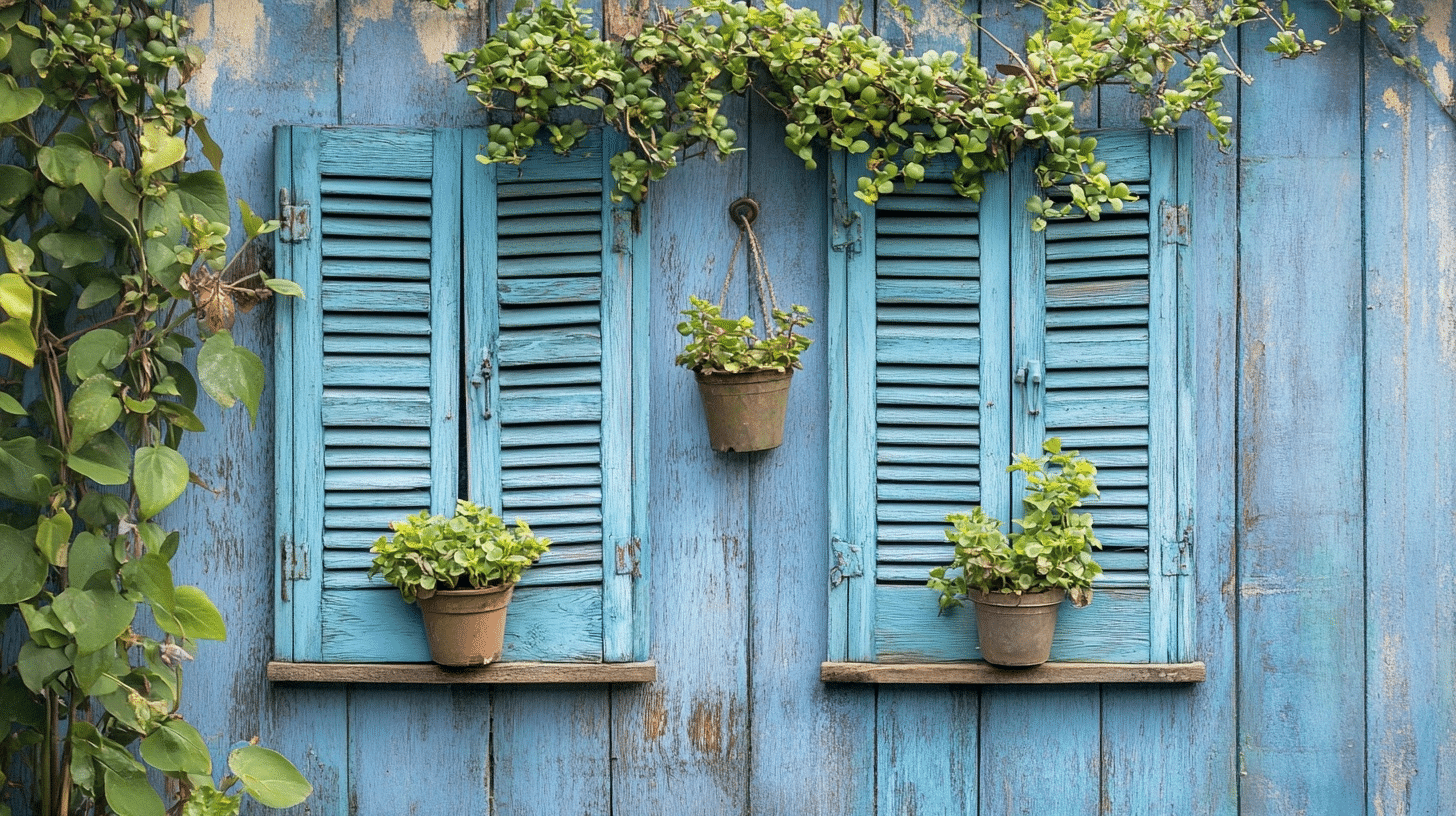
Old window shutters make impressive vertical garden features when mounted to walls or fences. Sand down rough edges and apply a coat of exterior paint to prevent wood rot.
You can attach small pots between the slats or hang planters from the cross pieces.
Shutters also work well as screens to hide utility boxes or create privacy in garden sitting areas.
Vintage Garden Tools
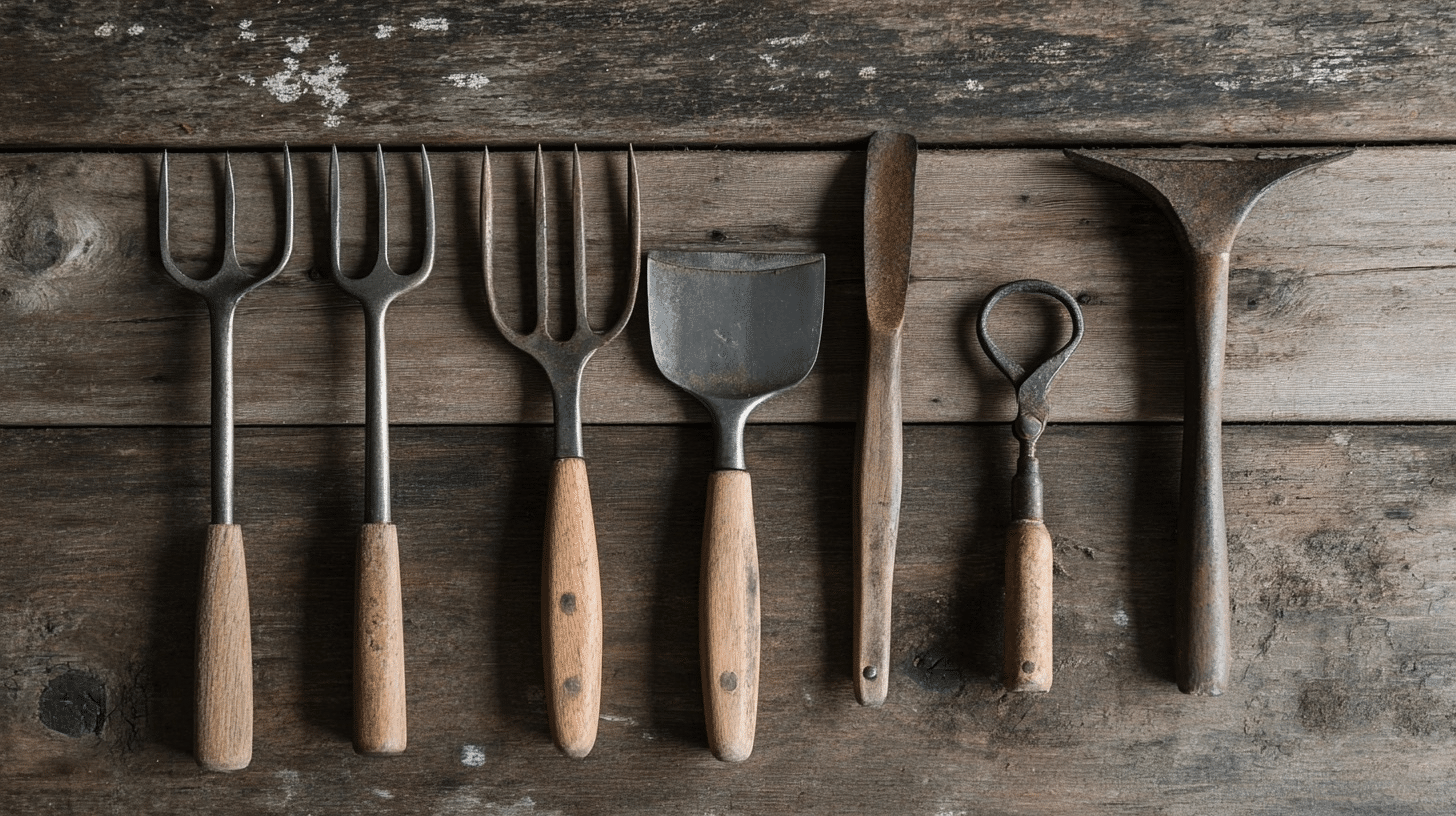
Hand tools with wooden handles develop a special patina over time that new tools lack. Verify that the metal parts aren’t severely cracked and that the handles are securely attached.
Small trowels and forks can be cleaned, sharpened, and put back into service for many years to come.
Tools that are too worn for use can be mounted on boards as wall art or used as garden markers by attaching nameplates.
Bird Baths and Feeders
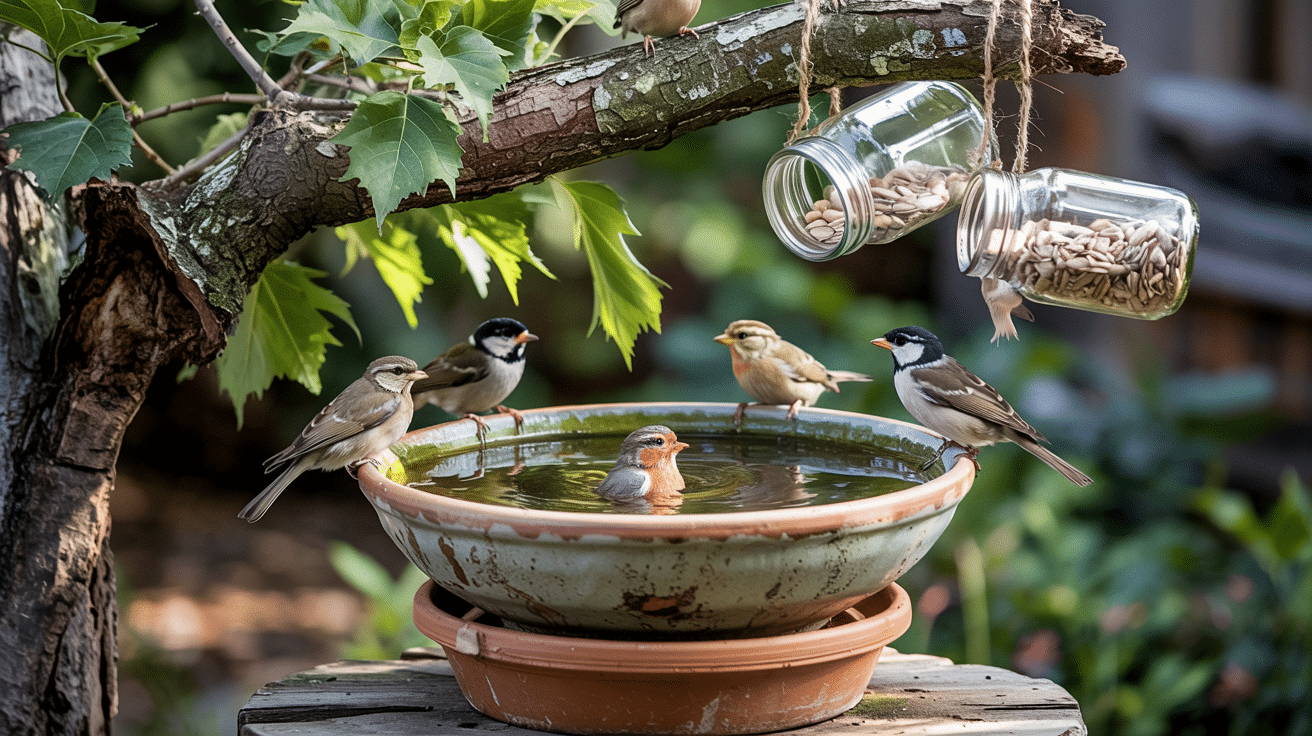
Creating custom bird features from thrifted items brings wildlife into your garden space. Look for shallow bowls with stable bases that won’t tip over in the wind.
Clean all parts thoroughly before use to remove harmful residues from previous owners.
Place your bath or feeder where you can watch from inside while keeping it safe from neighborhood cats.
Shelving Units
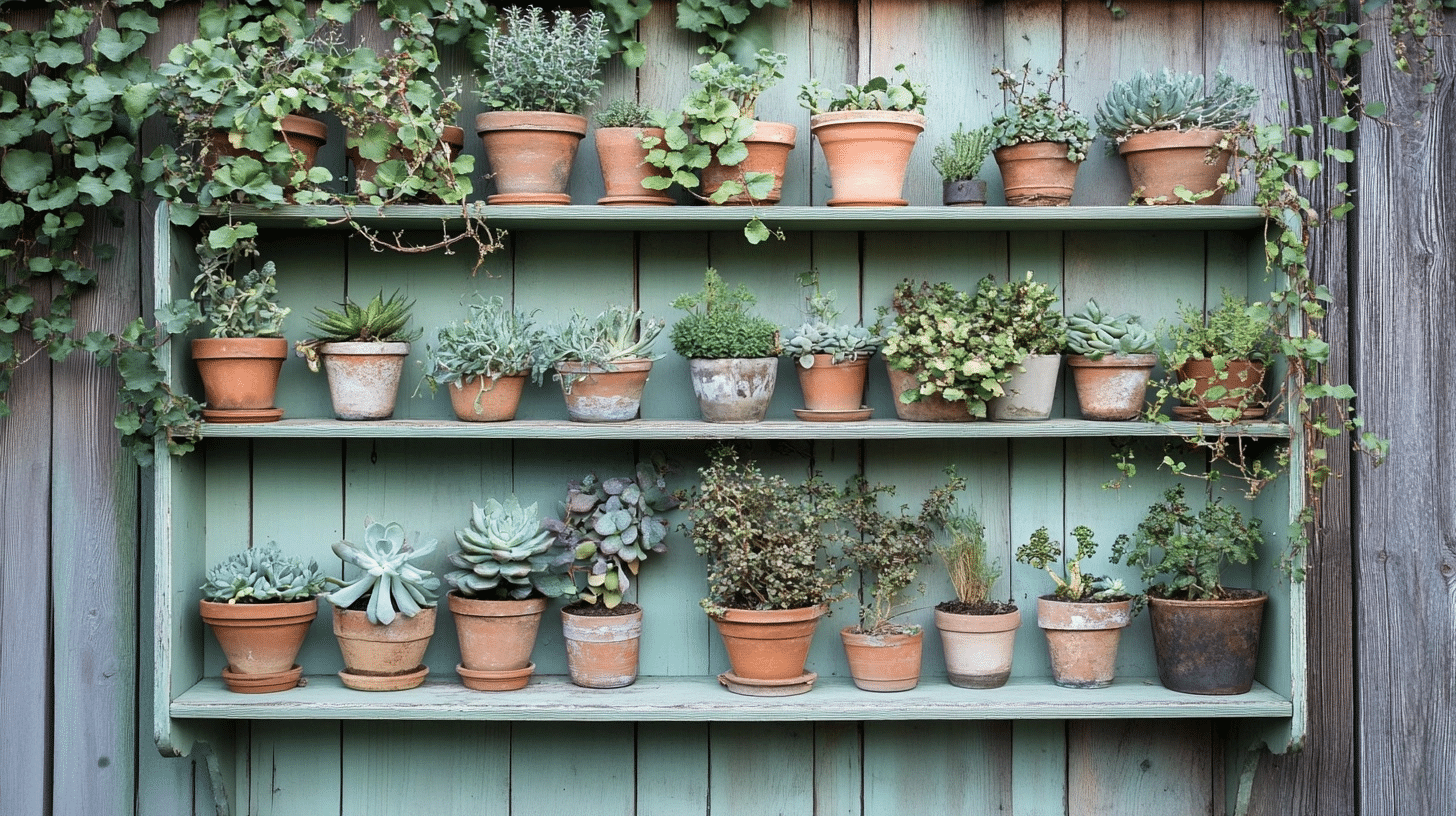
Small bookcases or shelf sets create vertical interest in garden corners or against walls. Treat wood shelves with a weather sealant or several coats of exterior paint for outdoor use.
Metal shelves should be checked for stability and rust spots before buying.
Position your shelving in a spot with the right light for the plants you want to display, creating a stunning plant showcase.
Old Furniture
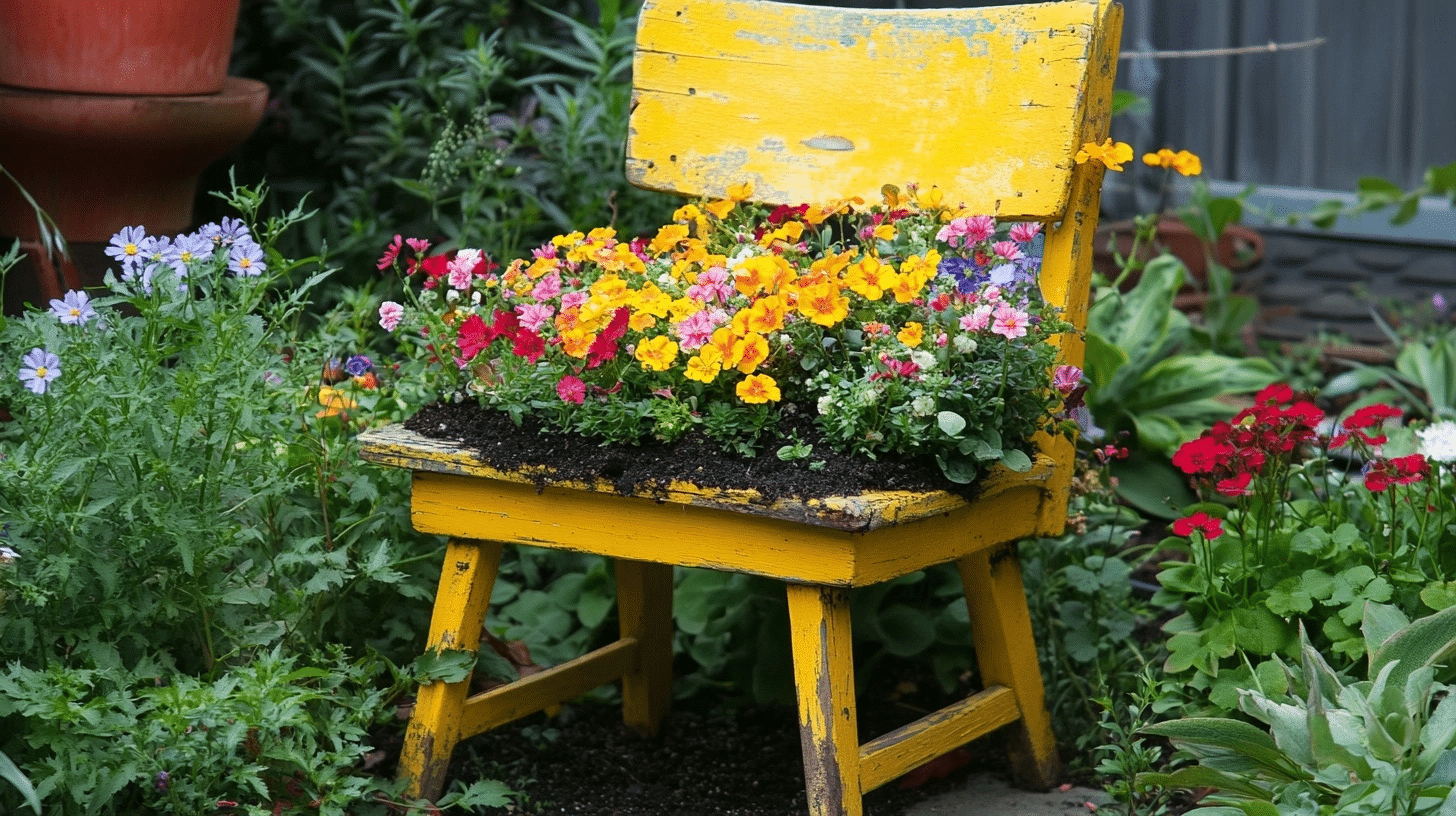
Discarded chairs, tables, and dressers can find new life as focal points in the garden. Wooden drawers make excellent raised planters when lined with landscape fabric.
Remove or drill drainage holes in the seats of chairs before adding soil and plants. Check furniture joints for stability and reinforce as needed before placing outdoors.
A brightly painted old chair with flowers spilling from its seat creates a graceful moment in the garden.
Glass Bottles and Mason Jars
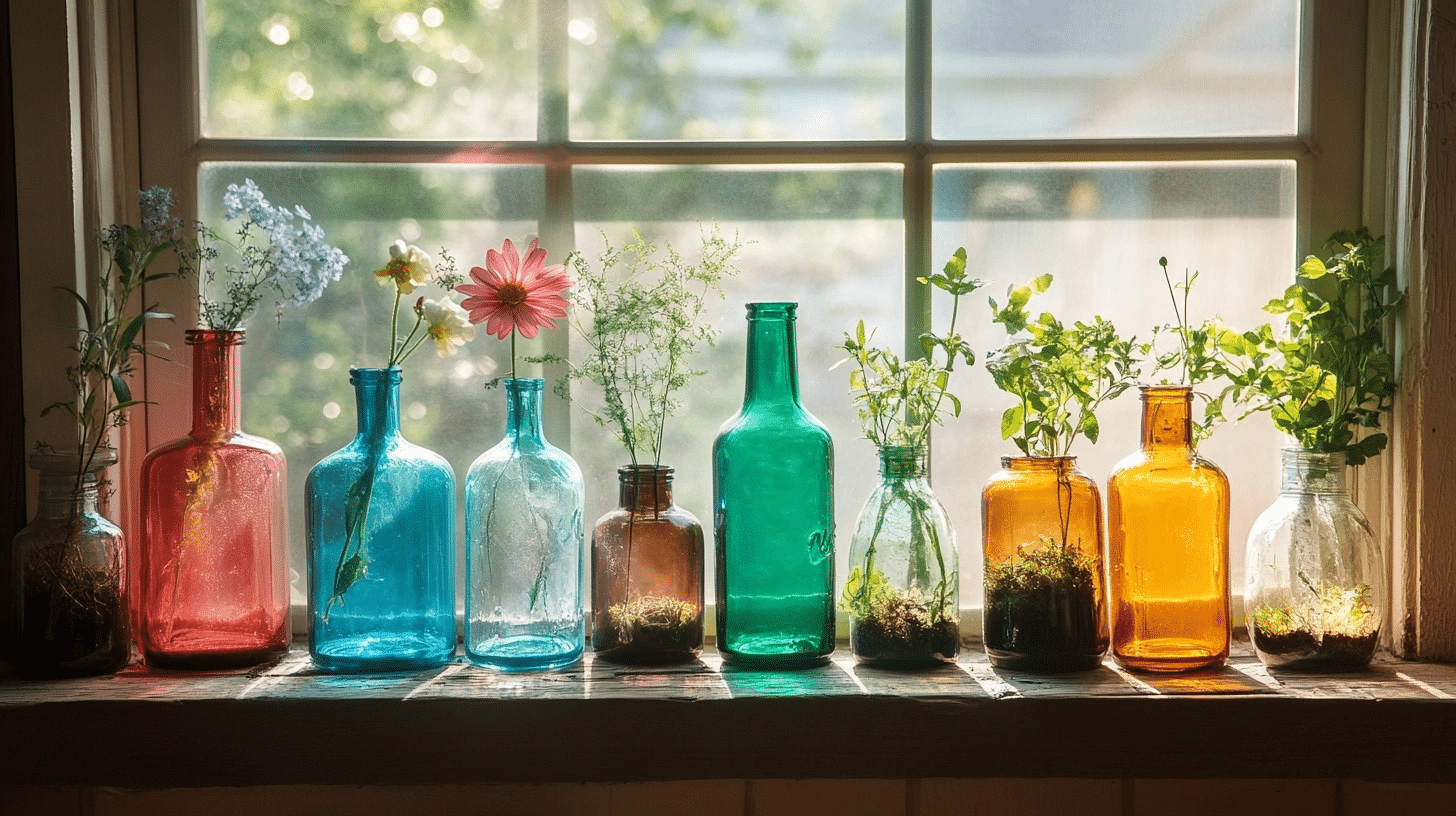
Clear glass items from thrift stores serve many garden purposes at minimal cost. Wash thoroughly and remove all labels before repurposing.
Taller bottles work well as flower vases, while wide-mouth jars can become terrariums for small plants. Colored glass adds visual interest when placed where sunlight can shine through it.
Group similar sizes together for a stronger visual impact in garden displays.
Ceramic Vases
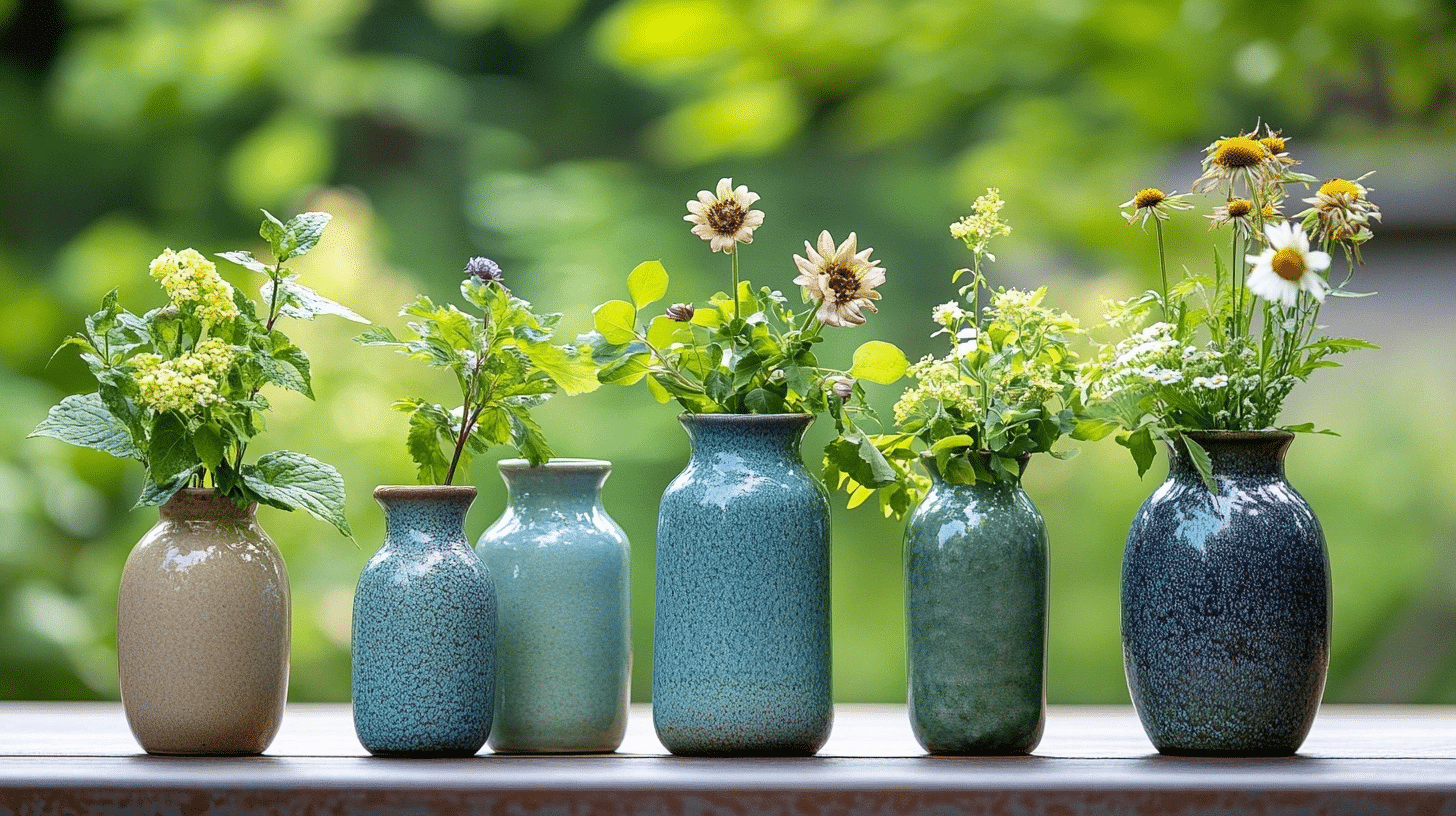
Thrifted vases in various shapes provide ready-made planters for small plants and flowers. Check for cracks that might leak water before purchasing.
Drill drainage holes in the bottom using a special ceramic bit if you plan to plant directly in them.
Odd-numbered groupings (three or five vases) create more pleasing arrangements than even-numbered sets. Place taller vases behind shorter ones for a layered look on porches or patios.
Blankets and Sheets
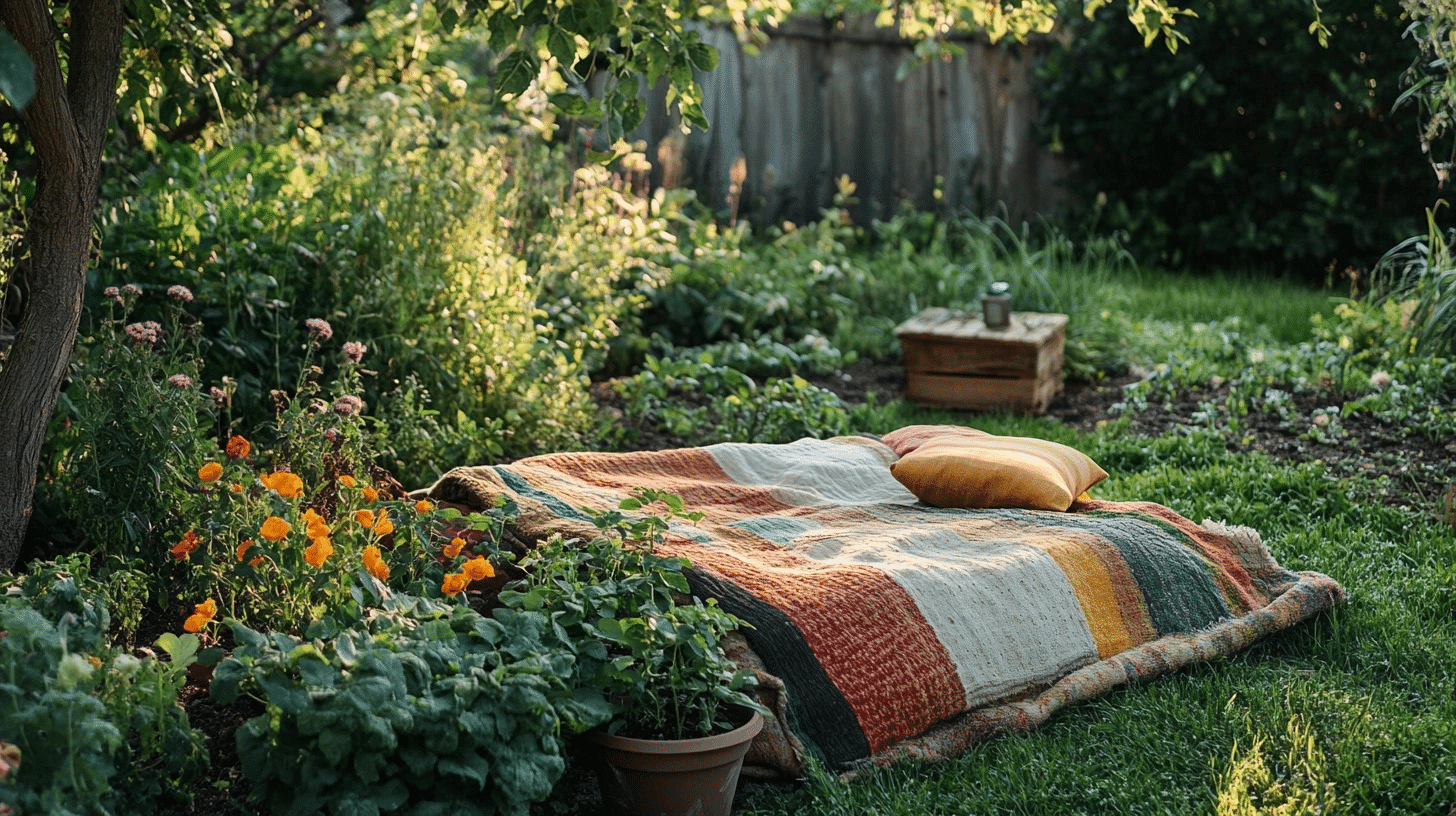
Old fabrics from thrift stores serve multiple practical purposes in the garden throughout the year. Cotton sheets work best for plant protection as they allow some air and light through.
Cut larger pieces into smaller sections to use as shade covers for heat-sensitive plants in summer. Keep a stack near your garden for quick frost protection on cool nights.
Wool blankets make comfortable ground covers for garden picnics or afternoon reading sessions.
Buckets for Compost or Collection
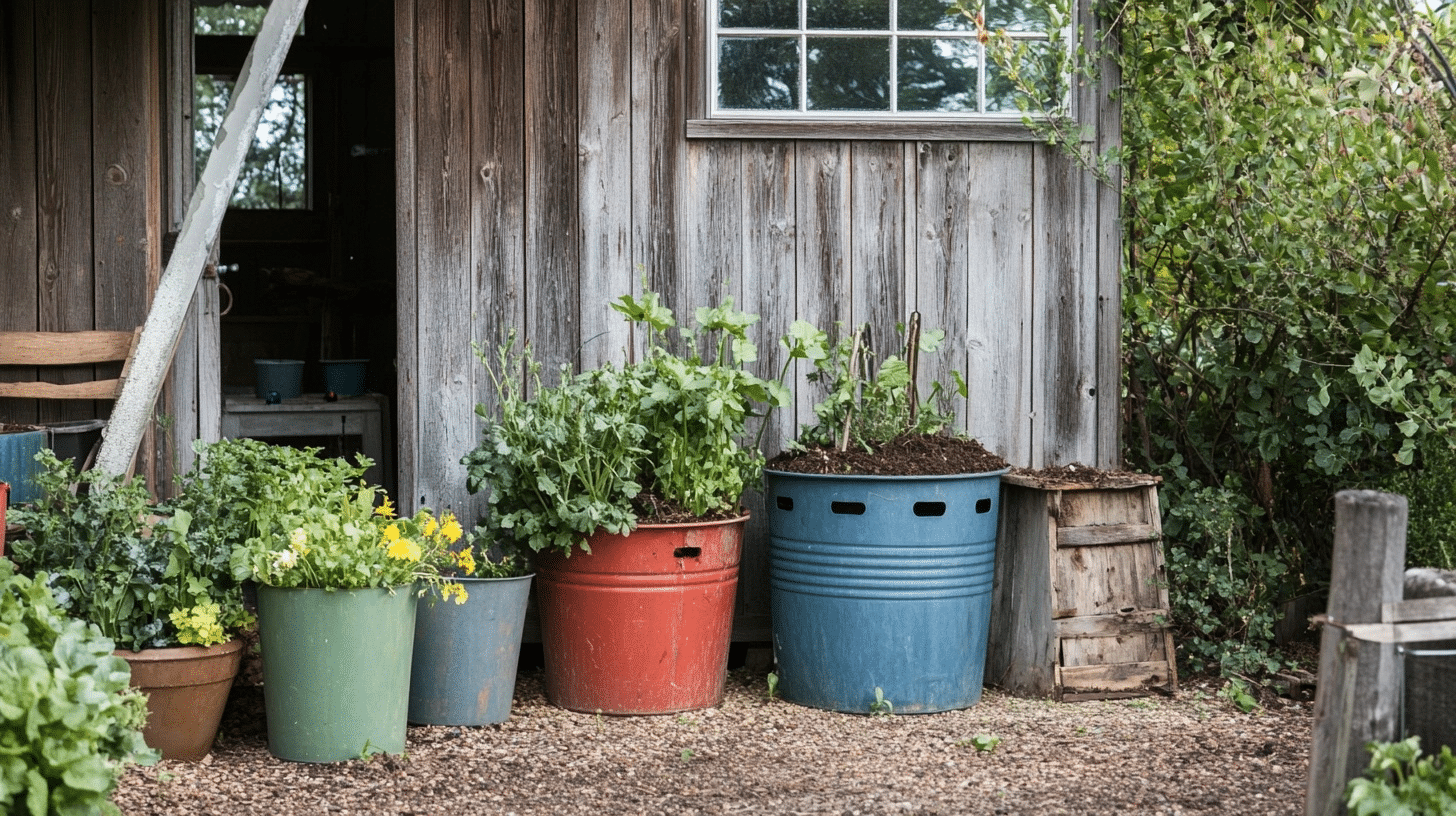
Large plastic buckets with handles make garden work easier and more organized. Check for cracks and splits before buying, especially around the rim and handle attachments.
Five-gallon sizes work well for mixing soil or carrying water to remote garden spots. Drill holes in the bottom of some for drainage when using as planters.
Stack smaller buckets inside larger ones to save storage space when not in use.
Scoring the Best Garden Thrift Store Deals
Scoring the best deals at a garden thrift store takes a mix of timing, strategy, and a keen eye for value. The thrill of the hunt is part of the fun, but knowing how to maximize your finds can make your trips even more rewarding.
Regular visits and a bit of patience are key. Inventory changes often, so the more frequently you go, the better your chances of snagging unique garden treasures before someone else does.
To make the most of your garden thrift store experience, keep these tips in mind:
- Go early and often: Arriving soon after new stock hits the shelves gives you first pick of fresh finds. Frequent visits increase your odds of discovering hidden gems.
- Pick a section and be thorough: Focus on one area at a time, such as garden tools, planters, or outdoor decor, and carefully inspect every shelf and bin. The best items are sometimes tucked away behind larger pieces or on lower shelves.
- Learn what to look for: Familiarize yourself with quality materials (such as real wood, sturdy metal, or durable ceramics) and reputable brands. This helps you distinguish between a bargain and a dud.
- Look for discounts: Many thrift stores offer weekly color tag sales or special promotions. Scan for discounted items and ask about coupons, especially if you donate items yourself.
- Don’t shy away from minor flaws: Small repairs or a bit of cleaning can turn a discounted item into a garden showpiece. If you spot damage, politely ask for a further discount and be prepared to make the necessary repairs at home.
With these strategies, you’ll be well-equipped to score the best garden thrift store deals and fill your garden with character and charm-without breaking the bank.
Mixing Old and New: Styling Tips for Thrifted Garden Decor
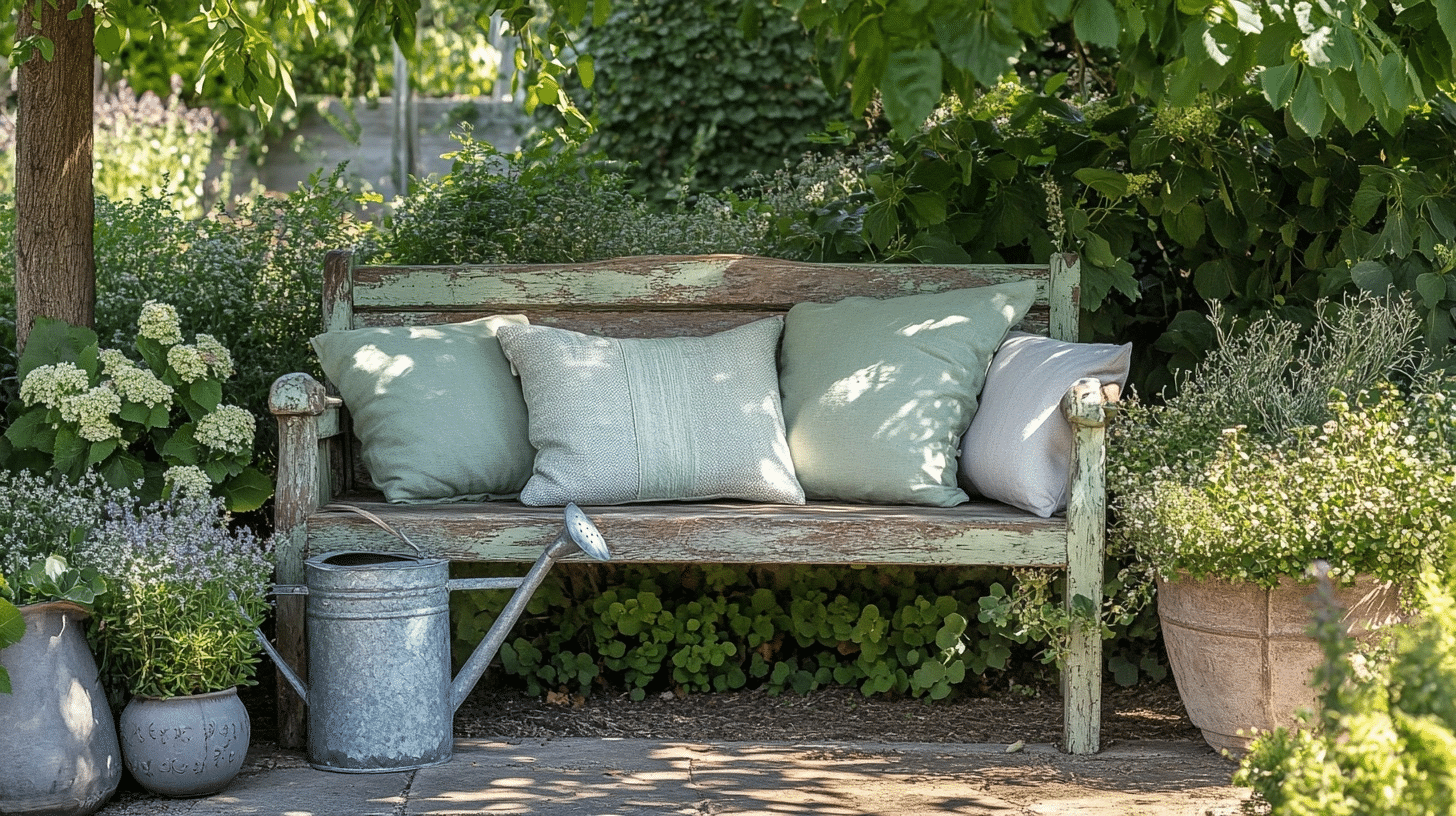
Blending thrifted finds with newer items creates a garden space that feels both personal and put-together. Start by selecting one or two larger secondhand pieces as focal points, then build around them with smaller items.
Color helps unite different styles and eras. Paint mismatched items in similar shades to achieve a cohesive look, or opt for a simple color scheme with three main hues.
Group items by function rather than age. A collection of containers, both old and new, looks purposeful when gathered together.
Add fresh elements to older pieces. New plants in vintage containers bridge the time gap beautifully.
Consider scale when mixing items. Place larger pieces toward the back, with smaller ones in front for depth.
Let some weathering happen naturally. The contrast between perfectly new items and those with a bit of history tells a more interesting story about the garden.
Finishing It Up
We’ve reviewed smart garden thrift store finds and tips on blending new with old. All these items can make your garden special without breaking your budget.
So what’s the big takeaway? With a bit of creativity, you can build a garden that feels like your own special place, filled with character that mass-produced items can’t match.
What should you do next?
Start by visiting your local garden thrift store with a list of a few items you’d like to find. Take your time looking through what’s available, and don’t rush your decisions.
Don’t forget to share photos of your garden thrift store finds on social media! We’d love to see how you’ve put these tips to work in your own outdoor space.
Happy thrifting!


